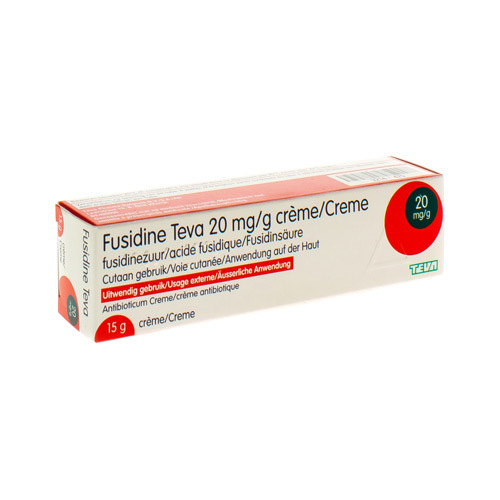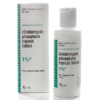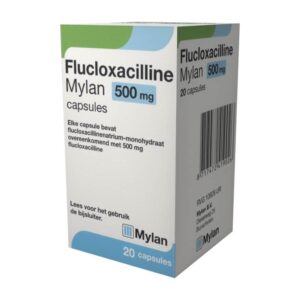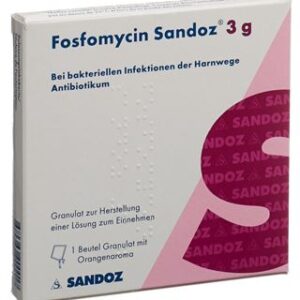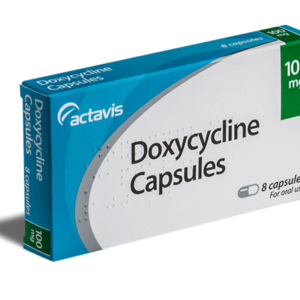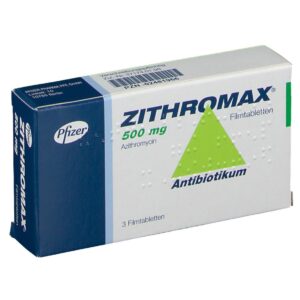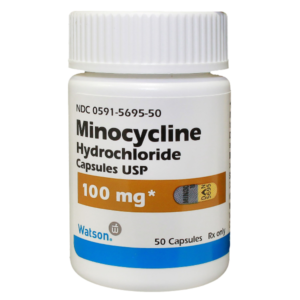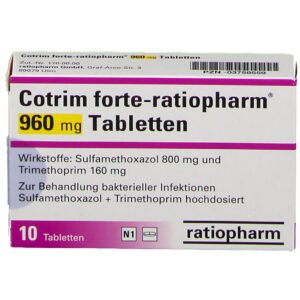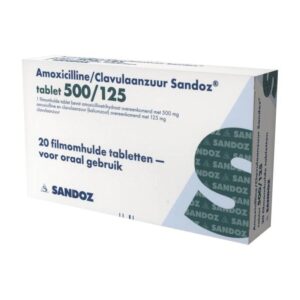Fusidinezuur Kopen
€50.21
Fusidic acid is an antibiotic mainly used to treat certain bacterial infections due to Staphylococci.
Buy Fusidic acid | Fusidic acid without a prescription
Fusidic acid is a primarily effective antibiotic against certain bacteria, Staphylococci .
In the form of tablets or oral suspension (oral route), it is indicated to treat staphylococcal infections (excluding meningitis and urinary tract infections), especially skin and osteoarticular infections.
In the form of ophthalmic gel, it can be used in bacterial infections of the eyes and eyelids.
In the form of cream, it should not be used for impetigo or furunculosis in case of intolerance, contraindication or resistance to another antibiotic, mupirocin. Indeed, the High Authority for Health (HAS) indicates that fusidic acid when treated locally promotes resistance that can harm its use by oral or injectable route.
Cheap Fusidic Acid Ointment 20Mg order discreetly online without a prescription, safe and reliable through our online pharmacy .
What should I be careful about before taking fusidic acid?
Do not take fusidic acid if you are allergic to this antibiotic.
Oral fusidic acid: Do not take fusidic acid if you are being treated for cholesterol by a prescription drug because fusidic acid increases the risk of sometimes serious muscle effects: Talk to your doctor, who may decide to boost your statin during antibiotic therapy.
See your doctor if you have liver disease, if you are being treated for HIV or are taking Ciclosporin. As a precaution, it has the precaution to avoid using fusidic acid during pregnancy (unless necessary) or breastfeeding. Ask your doctor or pharmacist.
Fusidic acid in topical application (CREAM, GEL): This antibiotic can be used during pregnancy and breastfeeding, but ask your doctor or pharmacist for advice.
Buy Fusidic Acid Etos | dose
The dose and duration of fusidic acid treatment are determined by your doctor. As an indication, in oral form, the usual dosage of fusidic acid is 1 g to 1.5 g per day in adults, depending on the severity of bacterial infection, in 2 or 3 doses per day until meals. The cream containing fusidic acid is generally applied 1 or 2 times a day for less than a week.
Do not interrupt your treatment before the end of the prescribed duration without medical advice, even if you feel better. Do not extend the duration of fusidic acid of your own accord if your symptoms do not improve, but inform your doctor. Failure to follow the duration of fusidic acid treatment prescribed for your case increases the risk of antibiotic resistance.
Do I have to change my lifestyle during treatment?
Do not wear contact lenses during treatment with fusidic acid ophthalmic gel. Transient impaired vision is possible: wait until your vision returns to normal to drive or use machines.
Taking fusidic acid is not a contraindication for sports or other daily activity. Orally, however, it can sometimes cause fatigue and the impression of weakness. There is no contraindication for alcohol consumption (in moderation) with fusidic acid.
Oral fusidic acid can sometimes cause drowsiness: be mindful of vehicle driving.
Side effects
Fusidic acid oral: The most common side effects are digestive disturbances (nausea, diarrhea, stomach pain, etc.), yellowness, fatigue, and rash.
The appearance of an allergic reaction (buds, edema, discomfort) requires the cessation of treatment and prompt medical consultation.
Call your doctor immediately if, while taking oral fusidic acid:
- You feel pain, weakness or loss of muscle sensitivity;
- You have a severe rash with fever or fatigue, blisters on the skin, wounds in your mouth, or inflammation of the eye.
Fusidic acid in ophthalmic gel: it can often cause temporary blurry vision, a burning sensation or eye tingling.
Fusidic acid in cream: In less than 1% of cases, it can cause redness, knots, burning sensations and itchy skin.
What to do with my surplus?
This medication is personally prescribed: do not give this medication to other people and never reuse these antibiotics without medical advice, even if your symptoms seem identical. Once the treatment is completed, report the medicines (blisters of tablets, creams, gels, bottles) started, not used or expired to your pharmacist.
To avoid the waste of antibiotics that remain in the box at the end of the treatment, the pharmacist can give you the exact number of units prescribed by the doctor. In this case, you have nothing to relate to the pharmacy.
Gerelateerde producten
Antibiotica Kopen
Antibiotica Kopen
Antibiotica Kopen
Antibiotica Kopen
Antibiotica Kopen
Antibiotica Kopen
Antibiotica Kopen
Antibiotica Kopen

